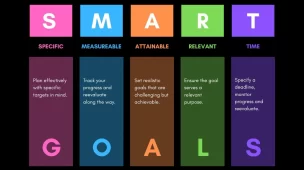Table of Contents
Walking meditation is a form of mindfulness practice that combines the physical act of walking with focused mental attention.
Unlike traditional seated meditation, walking meditation involves movement, making it an especially engaging and accessible method for cultivating mindfulness.
What is Walking Meditation?
- Physical Movement with Mindfulness: At its core, walking meditation is about walking slowly and deliberately while being fully aware of each movement and sensation.
It’s different from a casual stroll in the park, as it involves paying close attention to the experience of walking itself – the rhythm of your steps, the sensation of your feet touching and leaving the ground, and the synchronization of your breathing with your movements.
- Mental Focus and Awareness: While you walk, your mind is encouraged to stay present and focused.
This can involve observing your thoughts and feelings without judgment, bringing awareness to your breath, or even repeating a mantra or phrase in sync with your steps.
- Accessibility and Versatility:
One of the great advantages of walking meditation is its accessibility. It doesn’t require a special place or equipment and can be practiced almost anywhere – from a quiet path in nature to a room in your home. It’s particularly beneficial for those who find sitting still for long periods challenging or prefer a more active form of meditation.
- Benefits Beyond Relaxation:
Walking meditation not only promotes relaxation and stress reduction but also improves mental clarity, concentration, and physical health.
It can be particularly beneficial for those seeking a mindful way to engage with their surroundings, improve their mood, and enhance their overall sense of well-being.
- Spiritual and Cultural Significance:
This practice is deeply rooted in many spiritual and religious traditions, including Buddhism, where it is used as a means to deepen mindfulness and connect with spiritual teachings.
However, walking meditation is not confined to any particular belief system and can be practiced by anyone regardless of their religious or spiritual background.
In summary, walking meditation is a mindful practice that blends the simplicity of walking with the richness of mental focus, offering a path to inner peace, heightened awareness, and physical well-being.
It’s a versatile practice that speaks to the mind, body, and spirit, accessible to anyone regardless of their experience with meditation.
Step-by-step guide to start with walking meditation
1. Choose a Suitable Location:
Find a quiet, peaceful place where you can walk without interruption. It could be indoors, like a spacious room, or outdoors in a garden or park. The key is to have enough space to walk freely without obstacles.
2. Start with a Short Duration:
Begin with shorter sessions, like 5–10 minutes, and gradually increase the duration as you become more comfortable with the practice.
3. Prepare Your Mind and Body:
Before you start walking, stand still for a moment. Take deep breaths, relax your body, and set an intention for your meditation, such as being fully present or cultivating peace.
4. Focus on Your Steps:
Start walking at a slower pace than usual. Pay close attention to the sensations in your feet as they lift off the ground and touch back down. Feel the heel, ball, and toes of each foot in contact with the ground.
5. Coordinate Breathing:
Try to synchronize your breathing with your steps. For example, you might inhale for three steps and exhale for three steps. Adjust the rhythm to what feels natural and comfortable for you.
6. Engage Your Senses:
While maintaining focus on your steps and breath, expand your awareness to include the sounds, smells, and sights around you. Notice the air on your skin, the colors and shapes you see, and the sounds you hear, all without judgment.
7. Mindful Observation:
If your mind wanders, gently acknowledge the thoughts and bring your focus back to your walking and breathing. The goal is not to clear your mind of thoughts but to observe them without attachment.
8. Conclude with Reflection:
When you finish your walking meditation, stand still for a moment. Breathe deeply and reflect on the experience. Acknowledge any feelings or sensations that arose.
9. Integrate Regularly:
Incorporate walking meditation into your daily routine. Consistency is key to deepening the practice and reaping its benefits.
Remember, walking meditation is not about reaching a destination; it’s about being present in each step.
The pace, path, and duration can all be adjusted to suit your personal preferences and needs.
With regular practice, you’ll likely find a sense of calm, clarity, and mindfulness that extends beyond the meditation session into your everyday life.
Walking Meditation vs. Seated Meditation
Walking meditation and seated meditation are two prominent practices in the realm of mindfulness and meditation, each offering unique benefits and experiences.
Understanding their differences and applications can help you choose the right practice for your needs or even incorporate both into your routine for a well-rounded approach.
Walking Meditation: Movement Meets Mindfulness
1. Active Engagement:
Walking meditation involves actively moving and is ideal for those who prefer a more dynamic form of meditation.
It’s particularly beneficial for individuals who find sitting still for extended periods challenging.
2. Sensory Experience:
This form of meditation allows for a richer sensory experience.
Practitioners can engage with their surroundings, feeling the ground beneath their feet, observing nature, and incorporating the act of walking into their mindfulness practice.
3. Physical Benefits:
Besides mental and emotional benefits, walking meditation also offers physical benefits, such as improved circulation, gentle exercise, and better posture.
4. Accessibility:
It can be practiced in a variety of settings, indoors or outdoors, making it versatile and easily adaptable to different environments and schedules.
Seated Meditation: Stillness and Depth
1. Stillness and Focus:
Seated meditation emphasizes stillness, allowing practitioners to dive deeper into their mental and emotional landscape. It’s typically practiced in a quiet space, free from physical movement and external distractions.
2. Deeper Concentration:
The stillness of seated meditation can lead to deeper levels of concentration and introspection. It’s conducive to exploring specific meditation techniques like breath focus, mantra repetition, or visualization.
3. Physical Rest:
While physically less active, seated meditation provides an opportunity for the body to rest, which can be beneficial for those with physical constraints or after a physically demanding day.
There are many forms of seated meditation, each with its own focus and methodology, such as Vipassana, Zen, Transcendental Meditation, and mindfulness-based stress reduction.
Combining the Two for a Holistic Practice
Many practitioners find value in combining walking and seated meditation.
Walking meditation can serve as a gentle transition into a state of mindfulness, which can then deepen during a subsequent seated session.
Alternatively, starting with seated meditation can help stabilize the mind before engaging in the more dynamic practice of walking meditation.
Choosing What Works for You
The choice between walking and seated meditation ultimately depends on personal preference, physical ability, and specific goals. Some may prefer the active, sensory-rich experience of walking meditation, while others may find greater depth and stillness in a seated practice. Experimenting with both can offer a comprehensive perspective and a more versatile meditation practice.
In conclusion, both walking and seated meditation have unique strengths and can be valuable tools in cultivating mindfulness, reducing stress, and enhancing overall well-being. Whether in motion or in stillness, these practices invite you to explore the landscape of your mind and experience the profound benefits of meditation.









